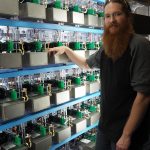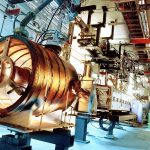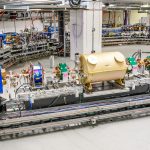What if you could accelerate particles to higher energies in only a few meters? This is the alluring potential of an up-and-coming technology called plasma wakefield acceleration. Scientists around the world are testing ways to further boost the power of particle accelerators while drastically shrinking their size.
accelerator
The U.S. Department of Energy has approved the scope, cost and schedule for the U.S. LHC Accelerator Upgrade Project and has given the first approval for the purchase of materials. This project brings together scientists, engineers and technicians from national laboratories — such as Fermilab, Brookhaven, Berkeley, SLAC and Jefferson labs — to develop two cutting-edge technologies to advance the future of both the Large Hadron Collider and broader collider research.
Agencies in the United States and France have signed statements expressing interest to work together on the development and production of technical components for PIP-II, a major particle accelerator project with substantial international contributions. In addition, the French agencies also plan to collaborate on DUNE, an international flagship science project that will unlock the mysteries of neutrinos.
From New Scientist, Aug. 29, 2018: Fermilab scientist and NIU professor Swapan Chattopadhyay is quoted in this article on the AWAKE experiment at CERN.
From WBBM Newsradio: Aug. 6, 2018: Fermilab has preliminary approval for its plan to upgrade its particle accelerator, which uses streams of neutrinos for a wide variety of physics research, by the middle of the next decade.
From Patch, July 30, 2018: Batavia’s Fermilab has just been approved to move forward with an accelerator project that will create more powerful particle beams to “generate an unprecedented stream of neutrinos.”
From Kane County Chronicle, July 31, 2018: The PIP-II accelerator upgrades are integral to the Fermilab-hosted Deep Underground Neutrino Experiment, also known as DUNE, which is the largest international science experiment ever conducted on U.S. soil.






